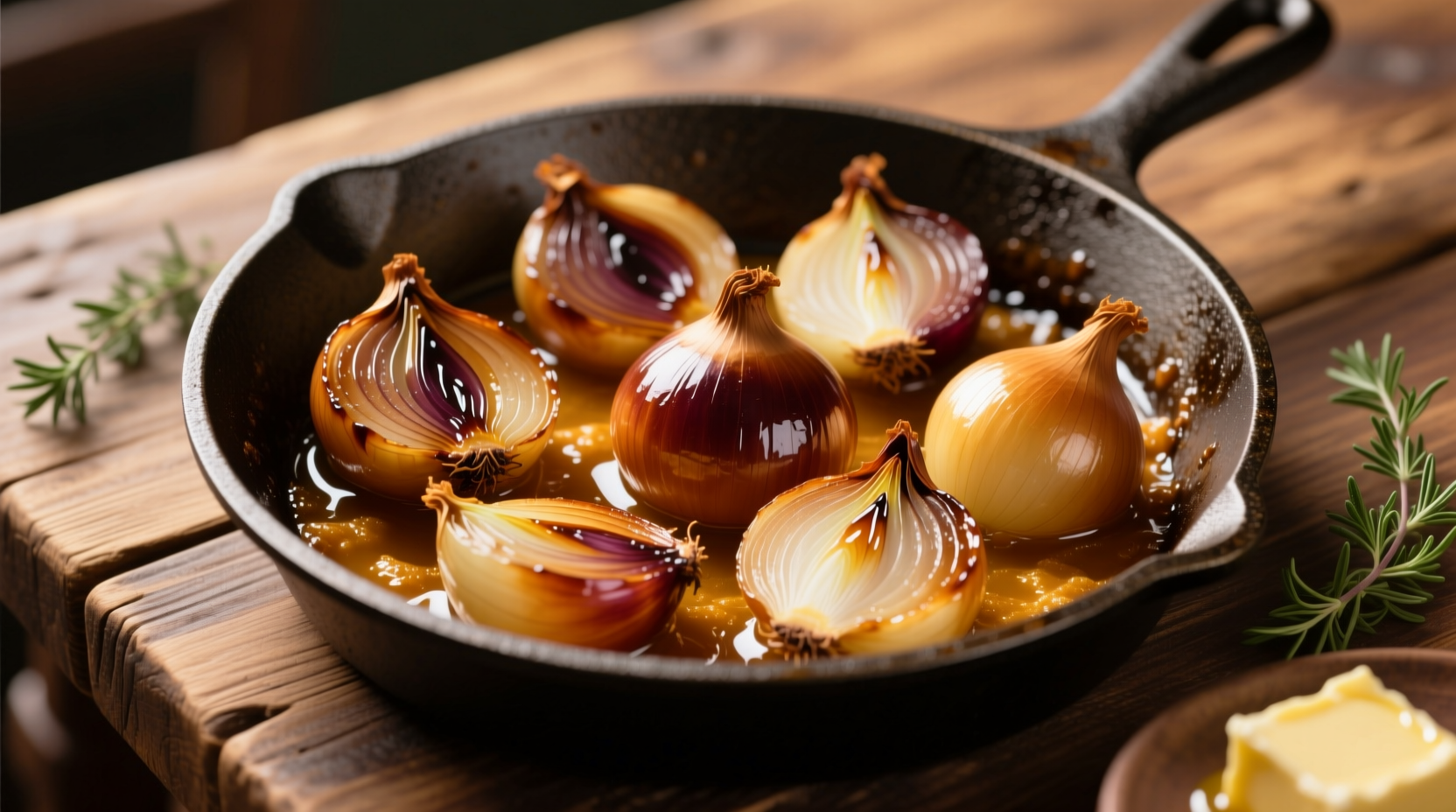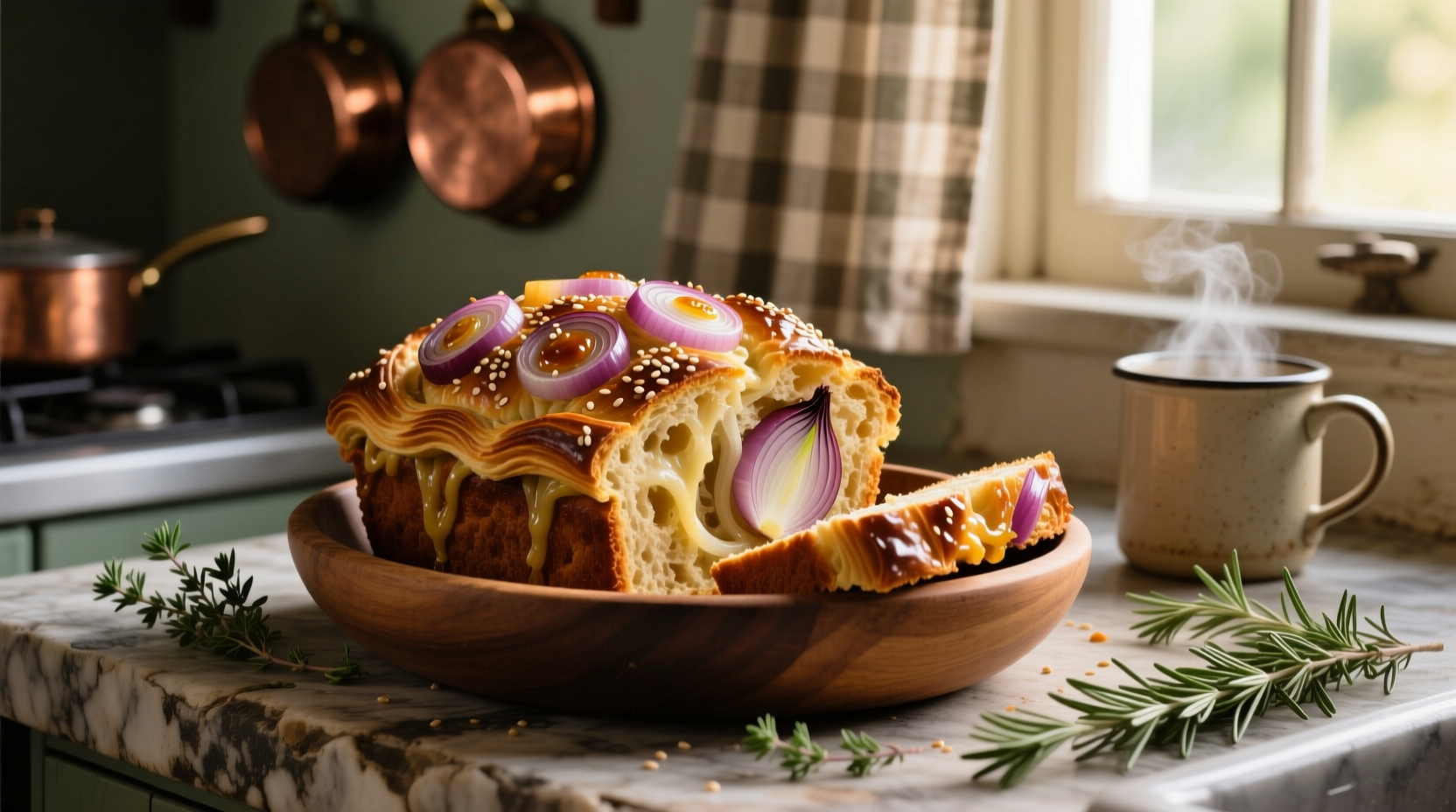Discover how to master this beloved comfort food with our comprehensive guide that combines culinary science, historical context, and practical baking techniques perfected over generations. Whether you're a beginner baker or seasoned bread maker, you'll learn the precise methods for achieving perfectly balanced onion flavor without compromising texture.
The Evolution of Onion Bread Through Culinary History
Onion bread's journey spans centuries and continents, evolving from humble peasant food to artisanal bakery staple. Historical records show onion-infused breads appearing in medieval European cookbooks as early as the 14th century, where they served as both flavor enhancer and food preservative in times of scarcity.
By the 19th century, onion bread became particularly prominent in Eastern European Jewish communities, where it transformed into what we now recognize as onion rye bread. Immigrants carried these traditions to America, where commercial bakeries began producing onion rolls and loaves for wider consumption. The modern "onion loaf" as a distinct category emerged in the 1970s with the artisan bread movement, emphasizing slow fermentation and high-quality ingredients.
| Era | Region | Key Characteristics |
|---|---|---|
| Medieval (1300-1500) | Europe | Simple flatbreads with raw onions, primarily for sustenance |
| 18th-19th Century | Eastern Europe | Rye-based loaves with caramelized onions, often with caraway |
| Early 20th Century | America | Commercial production of onion rolls and Jewish rye bread |
| 1970s-Present | Global | Artisan sourdough and enriched yeast loaves with complex onion preparations |
Why Onion Selection Matters: Varieties and Their Impact
The foundation of exceptional onion loaf begins with proper onion selection. Different varieties contribute unique flavor profiles and moisture content that dramatically affect your final product. While many recipes simply call for "onions," understanding the nuances can elevate your baking from good to extraordinary.
Yellow onions remain the most versatile choice, offering balanced sweetness and pungency when caramelized. Their moderate water content (89%) provides sufficient moisture without overwhelming the dough. Red onions, with their slightly higher sugar content (5.5% vs 4.3% in yellow onions), create beautifully colored loaves but can sometimes impart a subtle bitterness if not cooked properly. Sweet onions like Vidalia or Walla Walla offer intense sweetness but contain up to 93% water, requiring extended cooking to prevent dough sogginess.

Mastering the Caramelization Process: The Flavor Foundation
Proper onion preparation separates exceptional onion loaf from ordinary versions. The caramelization process transforms raw onion's sharp bite into complex sweetness through the Maillard reaction and sugar breakdown. This chemical transformation is crucial for developing the characteristic flavor without creating dough-damaging moisture.
For optimal results, slice onions uniformly to 1/8-inch thickness using a mandoline for consistency. Cook over medium-low heat with 1 tablespoon of oil per pound of onions, stirring occasionally. The process requires patience—true caramelization takes 35-45 minutes, not the 15-20 minutes many recipes suggest. Properly caramelized onions should be deep golden brown, reduced to about one-third their original volume, and have a jam-like consistency with no liquid remaining.
Critical mistake to avoid: Adding salt too early prolongs cooking time by drawing out moisture. Wait until onions have softened (about 15 minutes in) before seasoning. Never use high heat to speed the process—this creates bitter, unevenly cooked onions that will negatively impact your loaf's flavor.
Perfecting Your Onion Loaf Dough: Step-by-Step Guide
With properly caramelized onions cooled to room temperature, you're ready to create your dough. The key to successful onion incorporation lies in moisture management—excess liquid from improperly cooked onions is the most common cause of dense, gummy loaves.
Essential Ingredient Ratios
Maintain precise proportions for optimal texture. For a standard 1.5-pound loaf:
- 500g bread flour (75-80% hydration)
- 300-350g water (adjust based on onion moisture)
- 10g salt
- 7g active dry yeast
- 150g cooled caramelized onions (about 1 cup)
- 15g olive oil or butter
Dough Preparation Sequence
- Mix flour, water, and yeast (autolyse) for 20 minutes before adding salt and onions
- Incorporate cooled onions during final mixing stage
- Knead until windowpane stage is achieved (15-20 minutes by hand)
- First rise: 2 hours at 75°F (24°C) with stretch and folds at 45 and 90 minutes
- Shape into boule or batard, place in proofing basket
- Final proof: 1-1.5 hours at room temperature or 8-12 hours refrigerated
- Bake at 425°F (220°C) for 25-30 minutes with steam for first 15 minutes
Avoiding Common Onion Loaf Failures
Even experienced bakers encounter challenges with onion loaf. Understanding these context boundaries will help you troubleshoot issues before they ruin your bake:
- Excess moisture disaster: If onions release liquid when pressed, return to heat for additional 5-10 minutes. For every tablespoon of excess liquid, reduce water in recipe by 15g.
- Flavor imbalance: Raw onion flavor indicates insufficient caramelization. Properly cooked onions should have no sharpness—taste before adding to dough.
- Dense texture: Often caused by adding onions while still warm, which kills yeast. Always cool to room temperature first.
- Color issues: Pale loaves suggest under-caramelized onions; dark spots indicate burned onion bits. Strain onions through a fine mesh sieve before adding to remove any dark particles.
Creative Variations for Every Occasion
Once you've mastered the basic technique, explore these professionally tested variations that maintain structural integrity while enhancing flavor:
- Cheese-infused loaf: Fold in 100g finely grated sharp cheddar during final shaping (reduces spread by 15%)
- Herb garden version: Add 2 tablespoons each of fresh thyme and rosemary with the onions
- Gluten-free adaptation: Substitute 300g bread flour with 200g brown rice flour, 75g tapioca starch, 25g potato starch, plus 5g xanthan gum
- Vegan option: Replace butter with additional olive oil and ensure yeast is vegan-certified
Serving and Storage Best Practices
For optimal flavor development, resist cutting your onion loaf until it has cooled completely (2-3 hours). The residual heat continues cooking the interior, and premature slicing creates a gummy texture. When properly stored in a linen-lined bread bag at room temperature, onion loaf maintains peak quality for 3-4 days.
For longer preservation, wrap cooled slices tightly in beeswax wrap and freeze for up to 3 months. Thaw at room temperature and refresh in a 350°F (175°C) oven for 5-7 minutes. Never refrigerate bread—this accelerates staling through retrogradation of starch molecules.











 浙公网安备
33010002000092号
浙公网安备
33010002000092号 浙B2-20120091-4
浙B2-20120091-4